The 2027 BMW iM3 represents BMW M division’s first purpose-built electric performance sedan, scheduled to enter production in March 2027 according to leaked internal documents[1]. This high-performance variant of the Neue Klasse electric 3 Series will deliver approximately 670-700 horsepower in its initial rear-wheel drive configuration, with a future quad-motor variant expected to exceed 1,000 horsepower[2]. U.S. market availability begins late 2027 or early 2028, with estimated pricing starting around $80,000-$90,000[3].
Unlike the speculative vehicles sometimes circulating online, the iM3 has been confirmed through credible BMW insider leaks and extensive testing footage from the Nürburgring. According to Autvex automotive analysis, this represents BMW’s most significant commitment to electric performance, combining M division heritage with cutting-edge EV technology on the revolutionary Neue Klasse platform.
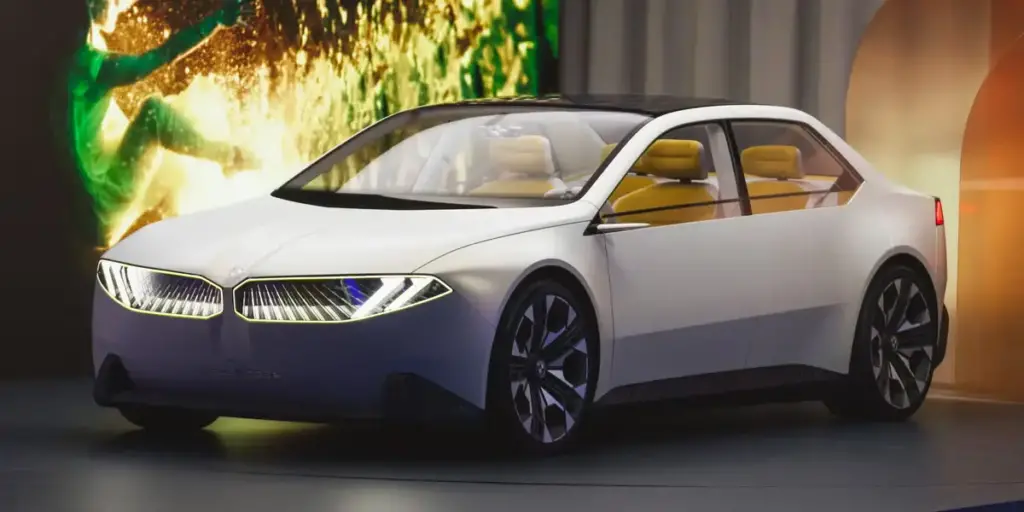
Understanding the 2027 BMW iM3: BMW’s First Electric M3
Production Status and Timeline
BMW’s electric M3 development has progressed beyond concept phase into confirmed production planning. Multiple reliable sources have disclosed specific manufacturing timelines that position the iM3 for late 2027 market introduction[1].
Confirmed production timeline:
- Production start: March 2027 at Munich, Germany facility
- Standard i3 production: Begins July 2026 (November 2026 for U.S. models)
- Project code: ZA0 (internal designation for electric M3)
- Production duration: Expected through 2034
- Pre-production testing: Currently underway at Nürburgring since August 2025[1]
The eight-month gap between standard i3 and performance iM3 production reflects the additional engineering validation required for M-specific components. BMW has designated Munich as the initial production location, though the standard i3 will expand to San Luis Potosí, Mexico facilities by 2027[1].
Early adopters interested in securing allocations should understand that understanding how long it takes to buy a car becomes particularly relevant for limited-production performance vehicles with anticipated waitlists.
What Makes the iM3 Different from Standard i3
The iM3 distinguishes itself from the standard electric i3 through comprehensive M division enhancements targeting track-capable performance while maintaining daily usability[2].
M-specific differentiators:
- Powertrain: Dual-motor RWD initially (700 hp) vs. single or dual-motor i3 configurations
- Suspension: M-tuned adaptive dampers with track-focused calibration
- Braking: M carbon ceramic brakes optional or standard equipment
- Aerodynamics: Aggressive body kit with functional air management
- Wheels/tires: 20-inch forged M wheels with performance summer tires
- Interior: M Sport seats with enhanced bolstering and M-specific trim[2]
The “Heart of Joy” supercomputer system represents BMW M’s proprietary integration of all vehicle dynamics systems. This centralized processor delivers 10x faster processing than current BMW systems, enabling real-time torque vectoring and adaptive chassis control that defines M character[2].
Gas M3 vs. Electric iM3: Dual Strategy
BMW’s unique approach maintains parallel development of gasoline and electric M3 variants, acknowledging diverse customer preferences during the electric transition[3].
| Feature | Gas M3 (G84) | Electric iM3 (ZA0) |
|---|---|---|
| Platform | CLAR (updated) | Neue Klasse EV |
| Engine/Motor | 3.0L inline-six turbo | Dual/quad electric motors |
| Power output | ~500-520 hp | 700-1,000+ hp |
| 0-60 mph | ~3.4 seconds | Sub-3.0 seconds |
| Top speed | 180 mph | 155-180 mph (limited) |
| Starting price | ~$80,000 | $80,000-$90,000 |
| Production start | 2027 (earlier) | March 2027 |
This dual-platform strategy acknowledges that some enthusiasts prioritize the auditory and tactile experience of combustion engines, while others embrace electric performance’s instant torque delivery and environmental benefits. The pricing proximity suggests BMW positions both as premium alternatives rather than creating artificial segmentation[3].
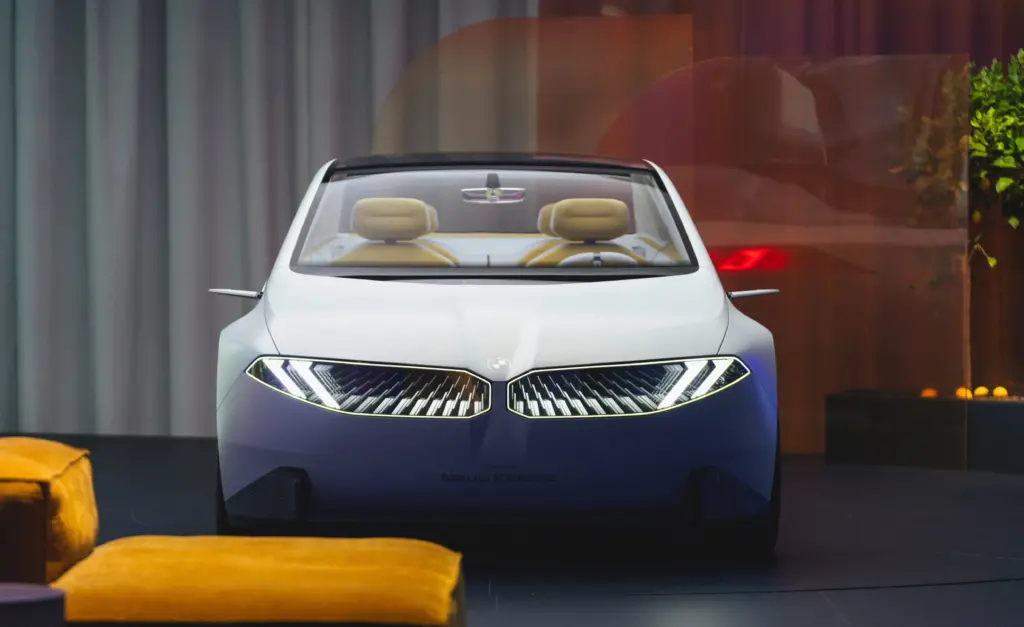
2027 BMW iM3 Performance and Powertrain
Electric Motor Configuration and Power Output
The iM3’s electric powertrain architecture represents BMW M’s first ground-up electric performance design, leveraging Neue Klasse Gen6 motor technology[4].
Launch configuration specifications:
- Motor type: ESM (externally excited synchronous motors) on rear axle
- Initial setup: Dual-motor rear-wheel drive configuration
- Base power: 670-700 horsepower (approximately 500-520 kW)
- Torque output: Instant delivery across entire rpm range (exact figures TBD)
- Drive modes: Multiple including RWD-biased performance mode for drift capability
Future quad-motor variant:
- Configuration: Four individual motors (one per wheel)
- Power output: 1,000+ horsepower (746 kW reported in leaks)
- Torque vectoring: Independent wheel control for maximum agility
- Expected arrival: 2028-2029 as iM3 Competition variant[2]
The rear-drive initial configuration maintains M3 tradition of balanced, driver-focused dynamics. Unlike all-wheel drive systems that sometimes feel front-heavy, the RWD setup promises classic M car throttle adjustability. The 2025 BMW i7 demonstrated BMW’s electric motor expertise in luxury applications; the iM3 adapts this technology for pure performance[4].
Acceleration and Top Speed Expectations
The iM3’s performance targets position it among the quickest sedans available, challenging both electric and combustion competitors[3].
Expected performance figures:
- 0-60 mph: Under 3.0 seconds (potentially 2.6-2.8 seconds)
- 0-100 mph: Approximately 6.5-7.5 seconds
- Quarter-mile: Sub-11 seconds with trap speeds over 125 mph
- Top speed: 155 mph standard (180 mph with M Driver’s Package)
- Launch control: Optimized battery discharge for maximum acceleration
Real-world acceleration depends significantly on battery state of charge and temperature. Electric vehicles deliver peak performance when batteries operate within optimal thermal windows, typically 70-90°F. The iM3’s advanced thermal management system preconditions batteries during performance driving to maintain consistency[2].
Compared to the current gas M3 Competition’s 3.4-second 0-60 mph time, the electric iM3 represents a half-second improvement—substantial in performance car metrics. However, top speed likely remains electronically limited due to aerodynamic efficiency prioritization for range preservation[3].
Battery, Range, and Charging Technology
The Neue Klasse Gen6 battery system represents BMW’s sixth-generation electric vehicle technology, delivering transformative improvements in energy density, charging speed, and efficiency[4][5].
| Specification | Gen6 Details | Gen5 Comparison |
|---|---|---|
| Cell type | Cylindrical 46mm diameter | Prismatic modules |
| Cell heights | 95mm and 120mm options | Various prismatic sizes |
| Voltage architecture | 800V/400V compatible | 400V standard |
| Charging speed | 30% faster | Baseline |
| Range improvement | 30% increase | Baseline (up to 710 km) |
| Energy density | 20% higher | Baseline |
| Weight reduction | Lighter (specific % TBD) | Heavier |
| Cost reduction | 40-50% lower | Higher manufacturing cost |
Battery capacity options:
- 75 kWh: Base configuration, approximately 280-320 miles EPA range
- 90 kWh: Mid-tier option, approximately 330-370 miles EPA range
- 105 kWh: Maximum capacity, approximately 380-420 miles EPA range
DC fast charging performance:
- 10-80% charging: 20-25 minutes at peak power
- 300 km (186 miles): Added in just 10 minutes
- Peak charging rate: Up to 300+ kW on 800V infrastructure
- Bi-directional charging: Vehicle-to-grid (V2G) capability expected[4][5]
The 800-volt architecture delivers superior charging efficiency compared to 400-volt systems. While many public chargers still operate at 400V, the Gen6 system adapts seamlessly, though charging speeds decrease accordingly. Real-world range during spirited driving will likely fall 20-30% below EPA estimates, similar to all performance vehicles[4].
BMW’s “Heart of Joy” Operating System
The Heart of Joy represents BMW’s centralized vehicle control supercomputer, integrating previously separate electronic control units into one powerful processor[2].
System capabilities:
- Processing power: 10x faster than current BMW systems
- Integration: Controls powertrain, chassis, steering, braking simultaneously
- Torque vectoring: Individual wheel control via quad-motor configuration
- Adaptive response: Real-time adjustment to road conditions and driver inputs
- Software updates: Over-the-air capability adding features post-purchase
The system continuously monitors dozens of parameters including steering angle, throttle position, brake pressure, lateral acceleration, and individual wheel slip. This data processes within milliseconds, adjusting power delivery to each motor for optimal traction and handling balance[2].
According to Autvex technology experts, centralized computing architectures represent the future of automotive design. Traditional vehicles distribute control across 50-100 separate modules; Neue Klasse reduces this to fewer than 10 major computing zones, dramatically simplifying electrical architecture and reducing vehicle weight by eliminating nearly 2,000 feet of wiring[1].
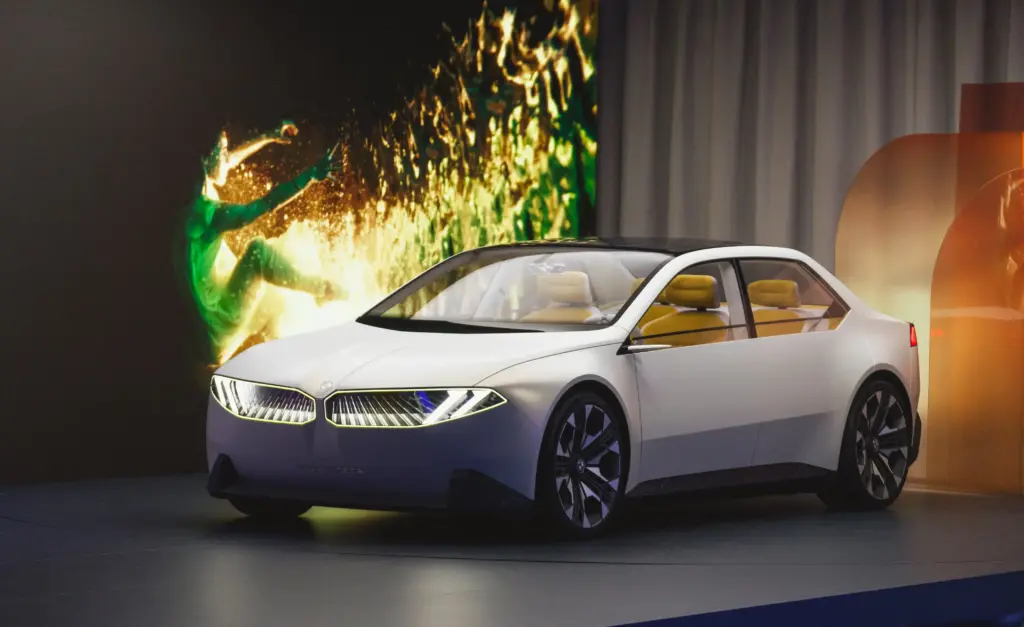
2027 BMW iM3 Design and Styling
Neue Klasse Design Language
The Neue Klasse aesthetic represents BMW’s most significant design evolution in decades, departing from the controversial styling themes that characterized recent models[6].
Design philosophy elements:
- Slim kidney grilles: Horizontal orientation replacing vertical G80 M3 grilles
- Phygital integration: Illuminated front-end elements combining physical and digital design
- Three-box silhouette: Classic sedan proportions with modern interpretation
- Clean surfacing: Minimalist body sides avoiding excessive character lines
- Aerodynamic optimization: Form following function for efficiency
Early prototype images reveal a more cohesive front-end design that addresses criticisms of the current G80 M3’s polarizing vertical kidney grilles. The iM3 returns to horizontal grille orientation that evokes classic BMW sedans while incorporating modern LED lighting signature[6].
Exterior Design Features and Aerodynamics
M-specific exterior enhancements differentiate the iM3 from standard i3 models while optimizing aerodynamic performance for both speed and efficiency[1].
Performance design elements:
- Widebody fenders: Flared wheel arches accommodating wider track and larger tires
- Front splitter: Carbon fiber lip managing underbody airflow
- Side skirts: Aerodynamic panels directing airflow along body sides
- Rear diffuser: Aggressive design managing rear-axle aerodynamics
- Deck lid spoiler: Integrated or optional carbon fiber spoiler adding downforce
- Pop-up door handles: Flush-mounted handles improving aerodynamic efficiency[1]
The iM3’s aerodynamic package must balance competing demands. Track performance requires downforce for high-speed stability, while efficiency optimization for range demands minimal drag. BMW M engineers likely employ active aerodynamic elements that adjust based on speed and driving mode[6].
Available Colors and Exterior Options
While BMW has not released official color offerings, patterns from current M vehicles and electric models suggest the iM3 palette[1].
Expected color availability:
- M-specific colors: Toronto Red, Isle of Man Green, potentially new electric M colors
- Individual colors: Extended BMW Individual palette with custom options
- Metallic options: Alpine White, Black Sapphire, Brooklyn Grey, Portimao Blue
- Frozen/matte finishes: BMW Individual frozen paint options at premium pricing
Exterior packages:
- M Carbon exterior package: Carbon fiber mirror caps, splitter, diffuser, spoiler
- Shadowline trim: Blacked-out exterior accents and badging
- M Performance wheels: 19-inch standard, 20-inch forged options
- Ceramic brakes: M carbon ceramic brakes with colored calipers
- Lighting: M-specific adaptive LED headlights with matrix functionality[1]
The BMW i7 established BMW’s commitment to offering extensive customization on electric vehicles. The iM3 should provide similar personalization depth, allowing buyers to create unique specifications reflecting individual preferences.
How iM3 Design Compares to Current G80 M3
The design evolution from G80 M3 to electric iM3 represents both continuity and transformation[6].
Design comparison:
| Element | G80 M3 | iM3 (Expected) |
|---|---|---|
| Front grilles | Large vertical kidneys | Horizontal slim kidneys |
| Overall aesthetic | Polarizing, aggressive | More refined, cohesive |
| Aerodynamics | Track-focused | Efficiency + performance |
| Body proportions | Long hood, short deck | EV skateboard platform proportions |
| Visual weight | Heavy, muscular | Lighter, more technical |
The controversial G80 M3 vertical grilles generated intense debate within automotive communities. Some enthusiasts embraced the bold statement; others found them visually overwhelming. The iM3’s return to horizontal proportions suggests BMW absorbed feedback while maintaining performance credibility[6].
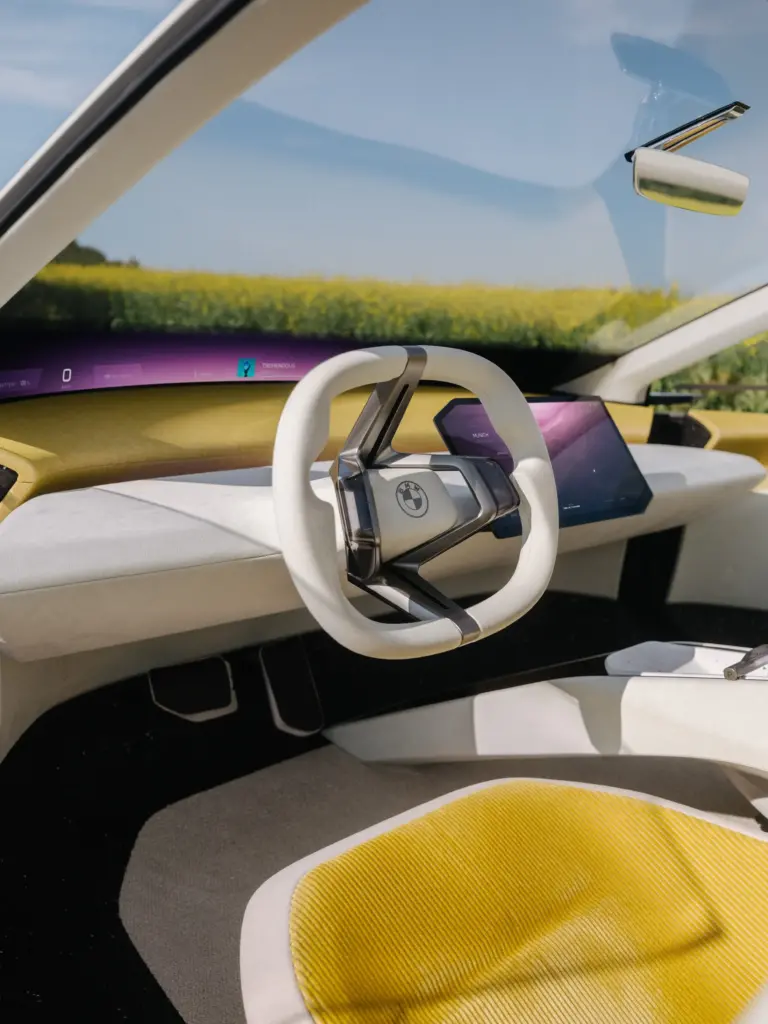
2027 BMW iM3 Interior and Technology
Cabin Design and Materials
The iM3 interior balances M performance focus with Neue Klasse’s sustainable design philosophy[1].
Interior highlights:
- Driver orientation: Cockpit angled toward driver with symmetrical passenger area
- Sustainable materials: Vegan leather options, recycled fabrics, responsibly-sourced wood
- Premium elements: Carbon fiber trim, brushed aluminum accents, ambient lighting
- M Sport seats: Enhanced bolstering with integrated headrests
- Color schemes: Multiple combinations including Merino leather upgrade options
- Sound insulation: Enhanced acoustic treatment for quiet EV cabin[1]
BMW’s shift toward sustainable materials doesn’t compromise luxury perception. Modern synthetic leathers often exceed animal hides in durability and consistency, while recycled materials achieve quality indistinguishable from virgin sources. The performance-focused M Sport seats provide lateral support during aggressive cornering while remaining comfortable for extended highway driving[1].
iDrive X Infotainment and Digital Displays
The next-generation iDrive X system debuts with Neue Klasse vehicles, representing BMW’s most significant infotainment evolution[1].
Technology features:
- Panoramic curved display: Seamlessly integrated driver display and central touchscreen
- Panoramic Vision HUD: Full-windshield head-up display with augmented reality navigation
- BMW Intelligent Personal Assistant: Voice control with natural language processing
- Wireless connectivity: Apple CarPlay, Android Auto without cable connections
- 5G connectivity: Ultra-fast data speeds for streaming and over-the-air updates
- Cloud-based navigation: Real-time traffic and charging station availability[1]
The Panoramic Vision head-up display projects information across the entire windshield width, creating augmented reality overlays for navigation arrows, speed limits, and safety warnings. This technology eliminates the need to glance at dashboard displays, keeping driver attention focused forward[1].
Driver Assistance and Safety Technology
Advanced driver assistance systems (ADAS) provide both convenience and safety enhancement[1].
Expected ADAS features:
- Highway Assistant: Level 2+ hands-free driving on mapped highways
- Adaptive cruise control: Stop-and-go capability in traffic
- Lane centering: Active steering maintaining lane position
- Automatic lane change: Driver-initiated lane changes via turn signal
- 360-degree cameras: Surround view with 3D visualization
- Parking Assistant Plus: Automated parallel and perpendicular parking
- Blind spot monitoring: Visual and haptic warnings for adjacent vehicles
- Cross-traffic alert: Front and rear cross-traffic detection[1]
Expected safety ratings:
- NHTSA: Anticipated 5-star overall rating
- IIHS: Expected Top Safety Pick+ designation
- Euro NCAP: Likely 5-star rating with strong sub-scores
The iM3’s safety systems operate faster than human reaction times, potentially preventing accidents through automated emergency braking and evasive steering. However, drivers must remain engaged; these systems assist rather than replace attentive driving[1].
Simulated Driving Experience Features
BMW M recognizes that electric vehicles lack traditional combustion engine sensory feedback. The iM3 addresses this through multi-sensory simulation[2].
Sensory enhancement systems:
- Synthetic engine sounds: Interior and exterior sound generation mimicking ICE engines
- Acoustic feedback: Customizable soundscapes or optional silence mode
- Haptic steering: Variable steering weight providing road feel information
- Visual cues: Display animations responding to acceleration and braking
- Pedal response: Adaptive accelerator resistance simulating engine loading[2]
Similar to the Hyundai Ioniq 5 N’s approach, BMW offers drivers choices ranging from artificial engine sounds to complete silence. Enthusiasts can select soundscapes evoking classic BMW inline-six engines, while others prefer the whisper-quiet electric experience. This flexibility acknowledges diverse preferences among M car buyers[2].
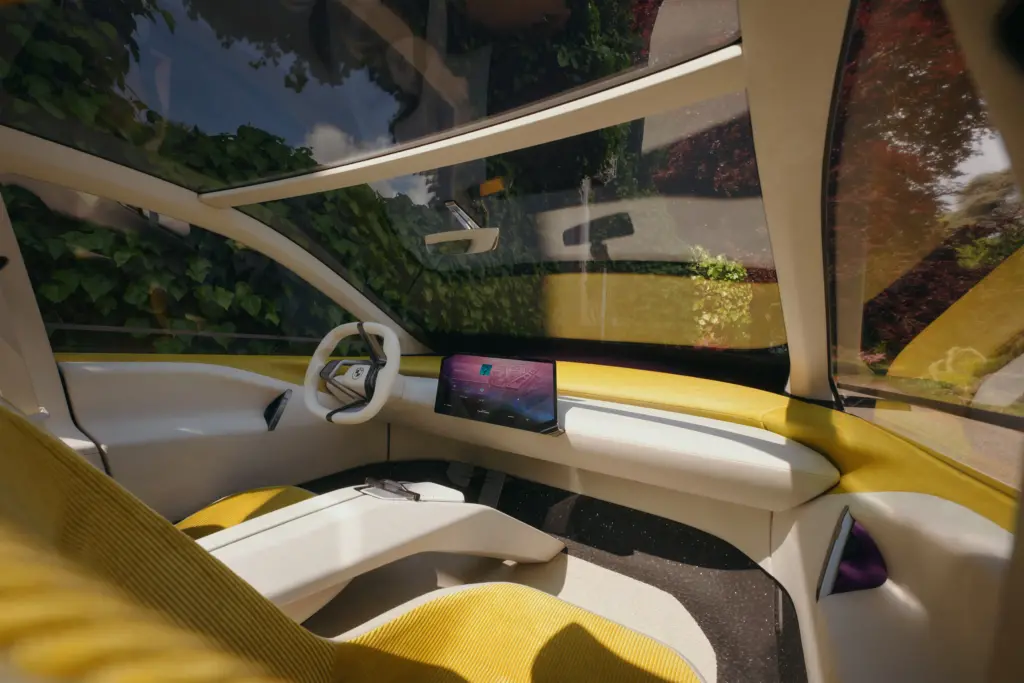
2027 BMW iM3 Trim Levels and Configurations
Launch Configuration Details
The iM3 launches with a single well-equipped configuration, with additional variants following in subsequent years[1].
Base iM3 standard equipment:
- Powertrain: Dual-motor RWD, 700 hp
- Battery: 90 kWh (likely mid-capacity option)
- Wheels: 20-inch M forged lightweight wheels
- Brakes: M Sport brakes standard (carbon ceramic optional)
- Suspension: M-tuned adaptive suspension
- Interior: M Sport seats, carbon fiber trim
- Technology: iDrive X, Panoramic Vision HUD, full ADAS suite
- Lighting: M-specific adaptive LED headlights[1]
This single-configuration launch strategy simplifies initial production while BMW validates customer preferences for future variants. The comprehensive standard equipment minimizes need for extensive option packages, though personalization remains available through BMW Individual program[1].
Expected Higher-Performance Variants
BMW M traditionally offers Competition and CS variants providing enhanced performance and exclusivity[2].
Future variant expectations:
- iM3 Competition (2028-2029):
- Quad-motor all-wheel drive
- 1,000+ horsepower output
- Enhanced cooling systems
- Track-focused suspension calibration
- Carbon fiber body components
- Estimated price: $100,000-$120,000
- iM3 CS (2029-2030):
- Extreme weight reduction
- Track-oriented setup
- Limited production numbers
- Exotic material usage
- Track telemetry systems
- Estimated price: $130,000+[2]
The staggered release strategy allows BMW M to establish the base iM3 before introducing higher-performance variants. This approach mirrors combustion M3 launches where Competition variants follow 12-18 months after initial introduction[2].
Packages and Add-On Options
Expected optional packages enhance capability, luxury, or personalization[1].
Anticipated packages:
- M Driver’s Package: Raised top speed limiter to 180 mph, track mode refinements
- Executive Package: Luxury amenities including massaging seats, upgraded audio, panoramic roof
- Technology Package: Enhanced driver assistance, 360-degree camera upgrades
- Carbon Package: Interior and exterior carbon fiber components
- Track Package: Upgraded brake cooling, performance tires, data logging
- Charging Package: Home Level 2 charger, DC fast-charging credits, mobile charging cable[1]
Understanding option packages helps buyers avoid over-spending on unnecessary features. The base iM3 likely includes sufficient equipment for most buyers, with packages addressing specific priorities like track driving or luxury amenities[1].
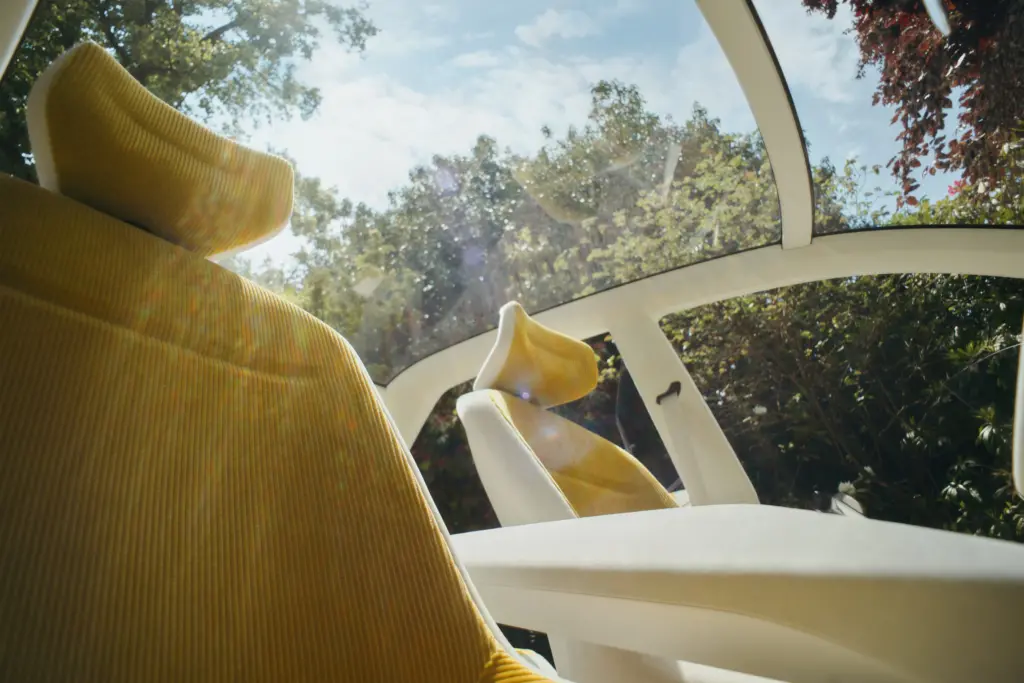
2027 BMW iM3 Pricing and Market Positioning
Expected Pricing Structure
While BMW hasn’t announced official pricing, industry analysis and competitive positioning suggest pricing ranges[3].
Estimated pricing:
- Base iM3: $80,000-$90,000 MSRP
- With popular options: $90,000-$100,000
- iM3 Competition (future): $100,000-$120,000
- Destination charge: Approximately $1,095
Premium over related models:
- vs. Standard i3: $25,000-$30,000 premium
- vs. Gas M3 Competition: $5,000-$10,000 premium ($79,900 current pricing)
- vs. BMW i4 M50: $12,000-$22,000 premium ($67,800 current pricing)[3][7]
The pricing positions iM3 as a premium performance EV competing directly with Porsche Taycan 4S ($100,000) and Audi RS e-tron GT ($143,400). At the estimated $80,000-$90,000 entry point, the iM3 undercuts German competitors while commanding substantial premium over Tesla Model 3 Performance ($54,990)[3].
Value Proposition vs. Competitors
The iM3’s value assessment depends on buyer priorities across performance, luxury, brand prestige, and total ownership costs[3].
Value factors:
- Performance per dollar: 700+ hp at $85,000 = $121 per hp (competitive)
- Brand heritage: BMW M division reputation and 50+ year performance history
- Technology: Gen6 battery, 800V charging, Heart of Joy system
- Driving dynamics: RWD option maintaining M3 character
- Luxury positioning: Premium materials and build quality
- Dealer network: Nationwide BMW service infrastructure
Total cost of ownership considerations:
- Fuel savings: $2,000-$3,000 annually vs. gas M3 (15,000 miles/year)
- Maintenance: Lower costs without oil changes, fewer brake jobs (regenerative braking)
- Insurance: Potentially higher due to performance and repair costs
- Depreciation: Unknown for first-gen electric M vehicle
- Charging costs: Home charging ~$0.12/kWh vs. public ~$0.40/kWh[3]
The 2024 BMW i7 demonstrated that electric BMWs maintain residual values comparable to combustion equivalents when equipped with desirable options and colors. The iM3’s limited production and M division cachet should support stronger residuals than mass-market EVs.
U.S. Market Federal Tax Credits and Incentives
Federal and state EV incentives significantly impact net purchase prices[3].
Federal tax credit considerations:
- Potential credit: Up to $7,500 for qualifying EVs
- MSRP limit: $80,000 for sedans (iM3 may exceed threshold)
- Battery sourcing: Must meet domestic content requirements
- Assembly location: Munich production may disqualify federal credit
- Income limits: Phase-out for high earners ($300,000+ joint filing)
State and local incentives:
- California: Up to $7,500 state rebate (Clean Vehicle Rebate Project)
- Colorado: $5,000 state tax credit
- New Jersey: $4,000 charge up rebate
- Utility rebates: Many utilities offer $500-$1,000 for EV purchases
- HOV lane access: Available in California, Virginia, Maryland, others[3]
The Munich production location likely disqualifies the iM3 from federal tax credits requiring North American assembly. However, if BMW shifts iM3 production to Mexico facilities (as planned for standard i3), later model years might qualify. Buyers should verify eligibility at purchase time as regulations evolve[1][3].
Reservation and Ordering Timeline
BMW’s typical new model rollout follows predictable patterns that help prospective buyers plan purchases[3].
Expected timeline:
- Late 2026: Pre-orders open, initial specifications announced
- Q1 2027: Dealer allocation begins, build-and-price configurator available
- March 2027: Production start in Munich
- Q3 2027: First European deliveries
- Q4 2027/Q1 2028: First U.S. customer deliveries
- 2028: Production ramp-up, broader availability[1][3]
Reservation strategies:
- Early deposits: Likely required to secure early allocations
- Dealer relationships: Established BMW M customers receive priority
- Specification flexibility: Early orders may have limited option availability
- Delivery delays: First-year production often experiences delays
Understanding the car buying process timeline becomes particularly important for limited-production performance vehicles where demand exceeds initial supply. Early reservations secure production slots, though exact delivery dates remain uncertain until production stabilizes[3].
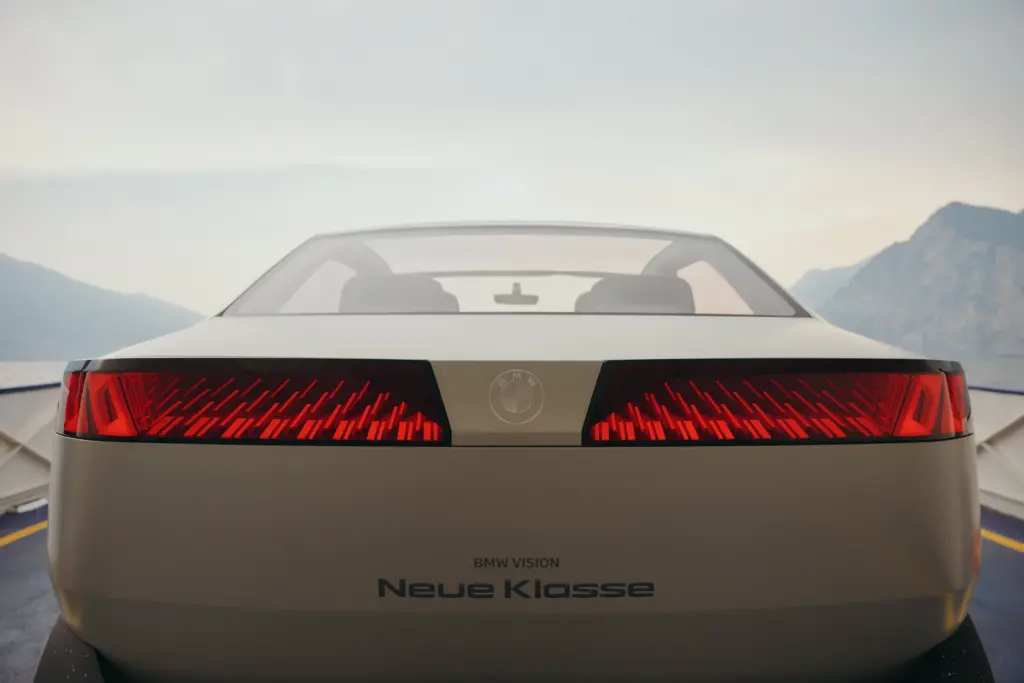
2027 BMW iM3 vs. Key Competitors
BMW iM3 vs. Tesla Model 3 Performance
The most direct price-performance comparison pits the iM3 against Tesla’s electric sedan benchmark[8].
| Specification | BMW iM3 | Tesla Model 3 Performance |
|---|---|---|
| Power output | 700 hp | 460 hp |
| 0-60 mph | Sub-3.0 sec | 2.9 sec |
| Top speed | 155-180 mph | 163 mph |
| Range (est.) | 300-370 miles | 303 miles |
| Charging | 800V, 300+ kW | 250 kW peak |
| Drivetrain | RWD/AWD options | Dual-motor AWD |
| Starting price | $80,000-$90,000 | $54,990 |
| Interior quality | Premium luxury | Minimalist functional |
| Driving dynamics | M-tuned, RWD balance | Agile, AWD grip |
Performance analysis:
Despite lower power, the Model 3 Performance’s lighter weight and optimized launch control deliver comparable acceleration. The iM3 counters with superior interior quality, M-tuned chassis dynamics, and RWD driving character that enthusiasts prize. The $30,000+ price premium buys BMW luxury, brand prestige, and traditional driving engagement[8].
BMW iM3 vs. Porsche Taycan Turbo
This comparison evaluates two German performance EVs with track-focused credentials[3].
Performance comparison:
- Power: iM3 ~700 hp vs. Taycan Turbo 671 hp
- Acceleration: Similar sub-3.0 second capability
- Track endurance: Both offer repeatable performance with advanced cooling
- Technology: 800V architecture shared, similar charging speeds
- Interior: Different philosophies—BMW driver-focused, Porsche cockpit-centric
- Price: iM3 $80K-$90K vs. Taycan Turbo $153,000+
The Taycan Turbo commands $60,000+ premium over anticipated iM3 pricing. Both deliver exceptional performance, but Porsche’s higher price reflects brand positioning, extensive carbon fiber, and proven EV performance credibility. The iM3 represents better performance-per-dollar, while Taycan offers ultimate track capability and Porsche cachet[3].
BMW iM3 vs. Mercedes-AMG EQE 53 4MATIC+
German luxury EV sedan rivals compete for similar buyers[3].
Comparison highlights:
- Power: iM3 700 hp vs. AMG EQE 53 751 hp
- Character: BMW driving dynamics vs. Mercedes comfort-focused
- Interior space: EQE offers more rear legroom
- Technology: Similar advanced systems with brand-specific implementations
- Heritage: M division vs. AMG performance legacies
- Price: iM3 $80K-$90K vs. EQE 53 $116,000
The AMG EQE 53 emphasizes refinement and straight-line acceleration over pure driving engagement. BMW M focuses on chassis balance, steering feedback, and driver connection. Both deliver exceptional luxury and performance, but target slightly different buyer priorities within the performance EV segment[3].
BMW iM3 vs. Current Gas-Powered M3 Competition
This intra-brand comparison helps buyers choose between electric and combustion M3 variants[7].
| Factor | Gas M3 Competition | Electric iM3 |
|---|---|---|
| Engine/Motor | 3.0L inline-six twin-turbo | Dual/quad electric motors |
| Power | 503 hp | 700+ hp |
| Torque | 479 lb-ft | Instant max torque |
| 0-60 mph | 3.4 seconds | Sub-3.0 seconds |
| Sound | Iconic inline-six howl | Synthetic or silent |
| Range | ~350 miles | 300-370 miles |
| Refuel time | 5 minutes | 20-30 minutes |
| Price | $81,195 | $80,000-$90,000 |
| Maintenance | Higher (oil, filters) | Lower (no ICE services) |
Buyer considerations:
Choose gas M3 if:
- Prioritizing traditional engine sound and character
- Requiring maximum range and fast refueling
- Concerned about EV charging infrastructure
- Preferring proven M3 formula
Choose electric iM3 if:
- Wanting maximum performance and acceleration
- Embracing EV technology and sustainability
- Having home charging capability
- Prioritizing lower running costs[7]
Both versions maintain M3 core values of balanced handling, precise steering, and driver engagement. The choice reflects individual priorities regarding powertrain character versus outright performance[7].
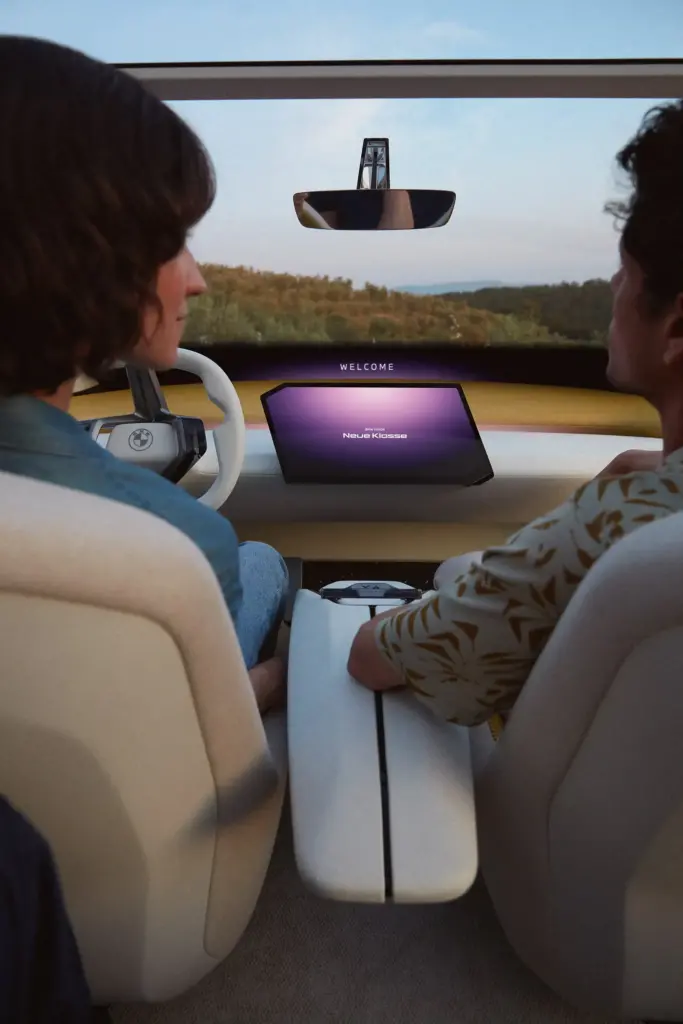
What We Don’t Know Yet About the 2027 BMW iM3
Unconfirmed Specifications and Features
Despite extensive leaks, several key specifications remain unconfirmed pending official BMW announcements[1].
Unknown specifications:
- Exact battery capacity: 75, 90, or 105 kWh—which sizes reach U.S. market?
- EPA range rating: Official certification pending (estimates: 300-420 miles)
- Final horsepower figures: Leaked 700 hp requires confirmation
- Curb weight: Critical for handling dynamics, currently unknown
- Weight distribution: Front/rear balance affects M character
- Charging curve: Real-world fast charging performance across state-of-charge range
- Interior dimensions: Passenger and cargo space specifications[1]
These unknowns prevent complete competitive analysis. Battery capacity directly impacts range, while curb weight fundamentally determines handling characteristics. BMW M engineers obsess over weight distribution; the iM3’s battery placement in floor influences this critical parameter[1].
Questions About Production and Availability
Manufacturing and allocation details remain uncertain until BMW provides guidance[1].
Production uncertainties:
- Total volume: Annual production capacity unknown
- U.S. allocation: Percentage of production designated for American market
- Launch markets: Which countries receive initial deliveries
- Right-hand drive: UK, Japan, Australia availability timing
- Production ramp: How quickly BMW scales from initial launch to full capacity
- Quality control: First-year production issues common with new platforms[1]
First-year production vehicles sometimes experience teething problems as manufacturing processes stabilize. Patient buyers might wait for 2028 model year allowing BMW to address any initial issues identified during 2027 production[1].
Future Variant Possibilities
BMW M’s history suggests multiple variants and special editions following initial launch[2].
Potential future variants:
- iM3 Touring: Wagon variant for European market (unlikely for U.S.)
- iM3 Convertible: Open-top variant (low probability given EV packaging)
- iM3 CSL: Ultimate track-focused edition with extreme weight reduction
- Extended range: Larger battery option sacrificing performance for range
- Software upgrades: Over-the-air updates unlocking additional performance
BMW’s track record with M3 variants includes numerous special editions: CSL, GTS, CS, and limited production models. The electric iM3 platform’s software-defined architecture enables performance upgrades through over-the-air updates, potentially offering subscription-based performance enhancements[2].
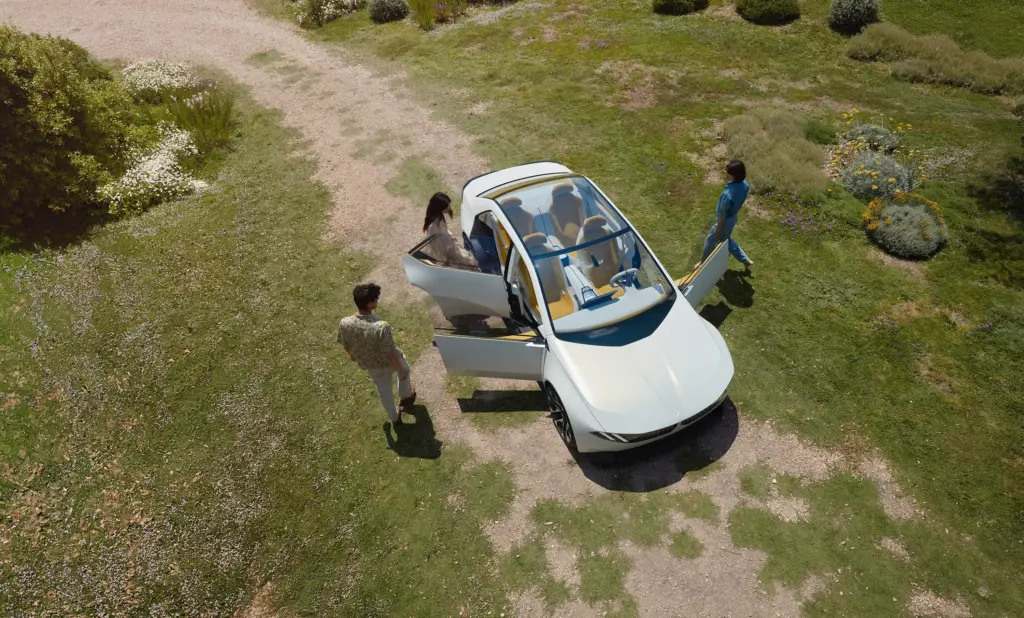
How to Stay Updated on 2027 BMW iM3 News
Official BMW Information Sources
Reliable information originates from BMW’s official communication channels[3].
Official sources:
- BMW Newsroom: press.bmwgroup.com publishes all official press releases
- BMW USA website: bmwusa.com/future-vehicles.html lists upcoming models
- BMW M social media: Official @BMWM Instagram, Twitter, Facebook accounts
- BMW dealer communications: Allocation bulletins and training materials
- Test drive events: BMW M Experience events featuring prototype demonstrations[3]
BMW M typically reveals specifications 12-18 months before production start. With March 2027 production scheduled, expect official announcements during Q4 2025 or Q1 2026 unveiling complete details[1].
Trusted Automotive Publications
Established automotive media provides credible analysis and testing[3].
Reputable publications:
- Car and Driver: Comprehensive testing and technical analysis
- Motor Trend: First drive reviews and comparison testing
- Road & Track: Track-focused performance evaluation
- Edmunds: Pricing analysis and ownership cost projections
- BMW Blog: Insider information and spy photography[3]
These publications maintain journalistic standards requiring source verification and factual accuracy. Their reputations depend on credibility, unlike speculative YouTube channels generating content for views[3].
Setting Realistic Expectations
Managing expectations prevents disappointment from production delays or specification changes[3].
Realistic perspective:
- Prototype vs. production: Test vehicle specifications may differ from final production
- Timeline flexibility: Production delays common in automotive industry
- Specification changes: Final specs sometimes vary from pre-production announcements
- Regional differences: U.S. models may differ from European specifications
- Pricing fluctuations: Economic conditions influence final MSRP[3]
The iM3 represents BMW M’s most ambitious electric vehicle project. While the March 2027 production date appears firm based on leaked documents, unforeseen technical challenges or supply chain disruptions could delay launches. Understanding automotive industry realities helps maintain reasonable expectations[1][3].
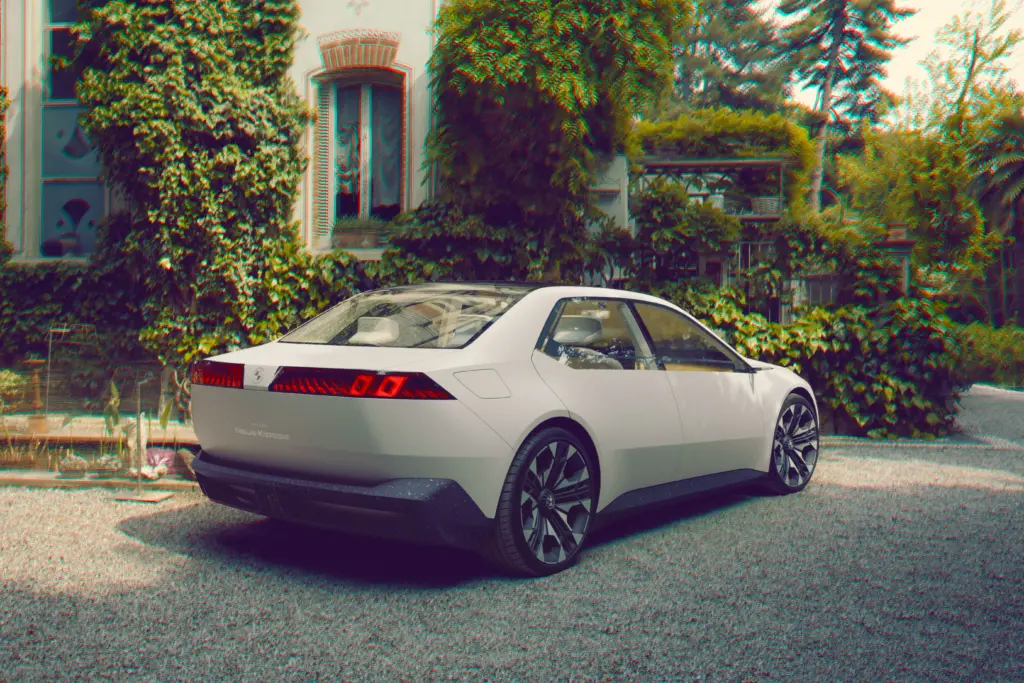
Should You Wait for the 2027 BMW iM3?
Who Should Consider the iM3
The iM3 appeals to specific buyer segments prioritizing performance within electric vehicle context[3].
Ideal iM3 buyers:
- Current M3 owners: Ready to transition to electric while maintaining performance character
- EV enthusiasts: Wanting legitimate performance credentials in electric sedan
- Early adopters: Willing to pay premium for cutting-edge technology
- Track participants: Embracing electric performance for weekend motorsports
- Environmental consciousness: Combining sustainability with driving excitement
- Home charging: Having garage or driveway for overnight Level 2 charging[3]
The iM3 represents significant investment requiring careful consideration. Buyers should evaluate whether electric performance aligns with usage patterns and charging infrastructure availability[3].
Who Should Look at Alternatives
The iM3’s premium pricing and electric powertrain don’t suit all buyers[3].
Consider alternatives if:
- Budget constraints: $70,000 or less maximum budget
- Sound priority: Valuing combustion engine auditory experience
- Immediate need: Requiring vehicle now rather than waiting 2+ years
- Range anxiety: Frequently driving 300+ miles without charging access
- Rental/no home charging: Lacking ability to charge overnight at home[3]
Electric vehicle ownership works best with home charging capability. Relying exclusively on public DC fast charging becomes inconvenient and expensive over time. Apartment dwellers without dedicated parking should carefully evaluate charging logistics[3].
Alternatives to Consider While Waiting
Several compelling alternatives offer performance while iM3 development continues[3][7].
Available alternatives:
- BMW i4 M50: $67,800, available now, 536 hp, 270-mile range
- BMW M3 Competition: $81,195, gas-powered, 503 hp, proven performance
- Tesla Model 3 Performance: $54,990, 460 hp, immediate delivery
- Porsche Taycan 4S: Used examples $60K-$80K, 469 hp, proven EV platform
- Mercedes-AMG EQE 53: $116,000, 751 hp, luxury EV performance[3][7]
The i4 M50 deserves particular consideration as BMW’s current electric performance sedan. While lacking ultimate M3 dynamics, it delivers 85% of the experience at lower pricing with immediate availability. Used Porsche Taycan 4S models offer exceptional value through depreciation, providing proven electric performance at iM3-competitive pricing[3].
Long-Term Ownership Considerations
Electric vehicle ownership introduces different considerations versus traditional vehicles[3].
Ownership factors:
- Battery warranty: Likely 8 years/100,000 miles covering degradation
- Charging infrastructure: Expanding but still developing in rural areas
- Insurance costs: Performance EVs typically cost more to insure
- Depreciation: Unknown for first-generation electric M vehicle
- Service network: BMW dealer training for electric M vehicles
- Technology obsolescence: Rapid EV advancement may date early models[3]
Battery degradation represents primary EV ownership concern. Modern batteries typically retain 90%+ capacity after 100,000 miles under normal use. Performance driving with frequent fast charging accelerates degradation versus gentle driving with home charging. BMW’s warranty should provide protection against excessive capacity loss[4][5].
According to Autvex long-term ownership analysis, electric vehicles generally require less maintenance than combustion equivalents, offsetting higher purchase prices through reduced operating costs. The iM3’s premium positioning and limited production may support stronger residual values than mass-market EVs, though first-year production always carries uncertainty[3].
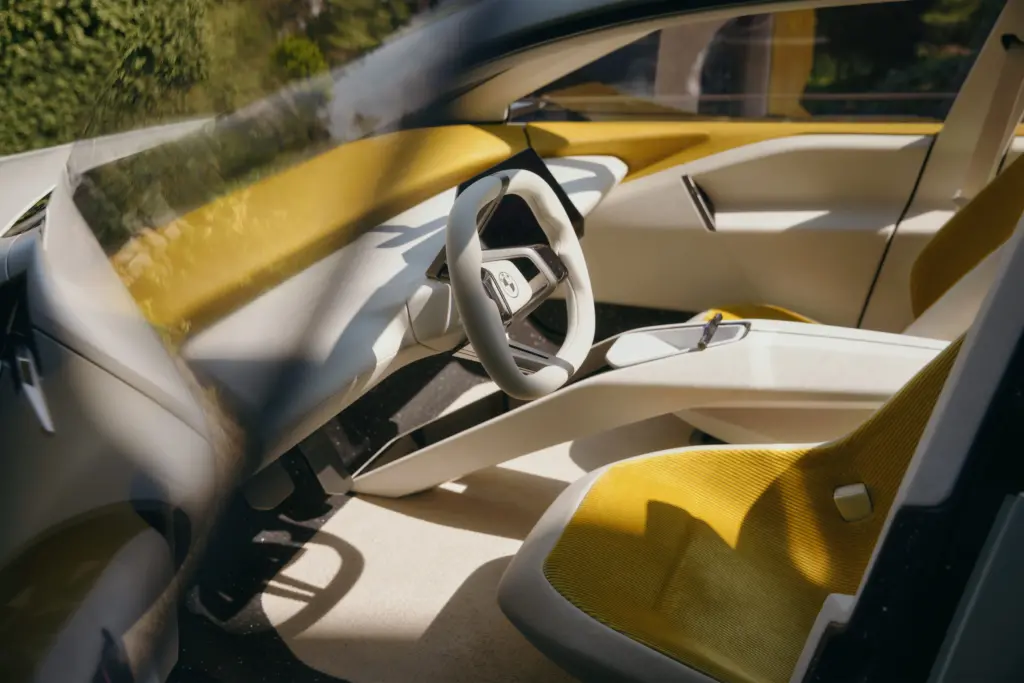
Key Takeaways
- The 2027 BMW iM3 enters confirmed production March 2027 with U.S. deliveries late 2027 or early 2028.
- Expected performance includes 700+ horsepower, sub-3.0 second 0-60 mph acceleration, and 300-400+ miles EPA range.
- Neue Klasse Gen6 battery technology delivers 800-volt architecture with 30% faster charging and 20% improved efficiency.
- Estimated pricing starts $80,000-$90,000, positioning between Tesla Model 3 Performance and Porsche Taycan pricing tiers.
- Dual-motor rear-wheel drive launch configuration maintains M3 driving character, with quad-motor AWD variant following 2028-2029.
- BMW’s Heart of Joy supercomputer integrates all vehicle systems for unprecedented performance control and real-time adaptation.
- Munich production location may disqualify federal EV tax credits, though state incentives remain available in multiple markets.
FAQs
When does the 2027 BMW iM3 go on sale?
Production begins March 2027 in Munich, Germany, with European deliveries starting Q3 2027. U.S. customer deliveries expected late 2027 or early 2028. Pre-orders likely open late 2026[1].
How much will the BMW iM3 cost?
Estimated starting MSRP ranges $80,000-$90,000 for base configuration. Higher-performance quad-motor Competition variant expected $100,000-$120,000+ when introduced 2028-2029. Pricing subject to change pending official announcement[3].
How fast is the 2027 BMW iM3?
Expected to accelerate 0-60 mph in under 3.0 seconds (possibly 2.6-2.8 seconds) with base dual-motor 700 hp configuration. Future quad-motor variant exceeding 1,000 hp likely achieves sub-2.5 second times[2].
What is the range of the BMW iM3?
Will there be a gas-powered M3 in 2027?
Yes, BMW confirmed parallel development of gasoline M3 (G84 code) using updated 3.0L inline-six engine. Gas and electric M3 variants coexist providing customer choice during electric transition period[3].
How many motors does the BMW iM3 have?
Initial launch configuration features dual motors in rear-wheel drive setup producing approximately 700 horsepower. Future Competition variant adds quad-motor all-wheel drive with 1,000+ horsepower[2].
Can the BMW iM3 beat a Tesla Model 3 Performance?
Expected to match or exceed Tesla’s 2.9-second 0-60 mph time with superior power output (700 hp vs. 460 hp). The iM3 emphasizes driving dynamics and luxury versus Tesla’s minimalist approach[8].
What is BMW’s Heart of Joy system?
Centralized supercomputer controlling all vehicle functions including powertrain, chassis, steering, and braking. Processes 10x faster than current BMW systems enabling real-time torque vectoring and adaptive chassis control[2].
Where will the BMW iM3 be built?
Initial production occurs at BMW Munich facility starting March 2027. Standard i3 production expands to San Luis Potosí, Mexico by 2027, though iM3 may remain Munich-exclusive[1].
Does the BMW iM3 qualify for federal tax credits?
Uncertain—Munich production likely disqualifies $7,500 federal credit requiring North American assembly. If production shifts to Mexico facilities, later model years might qualify. Verify eligibility at purchase time[3].
References
- BMW Blog. (2025). Electric BMW M3 Production Starting In March 2027: Report. https://www.bmwblog.com/2025/06/22/electric-bmw-m3-production-starting-march-2027-report/
- Vorteq Carbon. (2025). Leaked: 2027 BMW i3 and iM3 Details Reveal Major Shift for Next-Gen 3 Series. https://www.vorteqcarbon.com/blogs/news/leaked-2027-bmw-i3-and-im3-details-reveal-major-shift-for-next-gen-3-series
- Car and Driver. (2025). 2027 BMW iM3: What We Know So Far. https://www.caranddriver.com/bmw/im3
- BMW Blog. (2025). Inside BMW’s Gen6 Battery Technology. https://www.bmwblog.com/2025/02/20/bmw-gen6-battery-neue-klasse-ev-tech/
- Bimmerpost. (2025). BMW Gen6 EV Batteries and Motors Specs Revealed. https://bmwi.bimmerpost.com/forums/showthread.php?t=2167616
- Carscoops. (2025). The Electric M3 Ushers In A New Era Of BMW Design. https://www.carscoops.com/2025/07/the-electric-m3-ushers-in-a-new-era-of-bmw-design/
- Edmunds. (2024). 2024 BMW M3 MSRP and Invoice Prices. https://www.edmunds.com/bmw/m3/2024/msrp/
- Machines with Souls. (2024). Debunking the Tesla Model 3 Performance vs BMW M3. https://machineswithsouls.com/the-tesla-model-3-vs-bmw-m3/

I am a senior automotive analyst at Autvex. Expert vehicle evaluations, in-depth reviews, and objective analysis helping readers make informed automotive decisions with years of industry experience.

